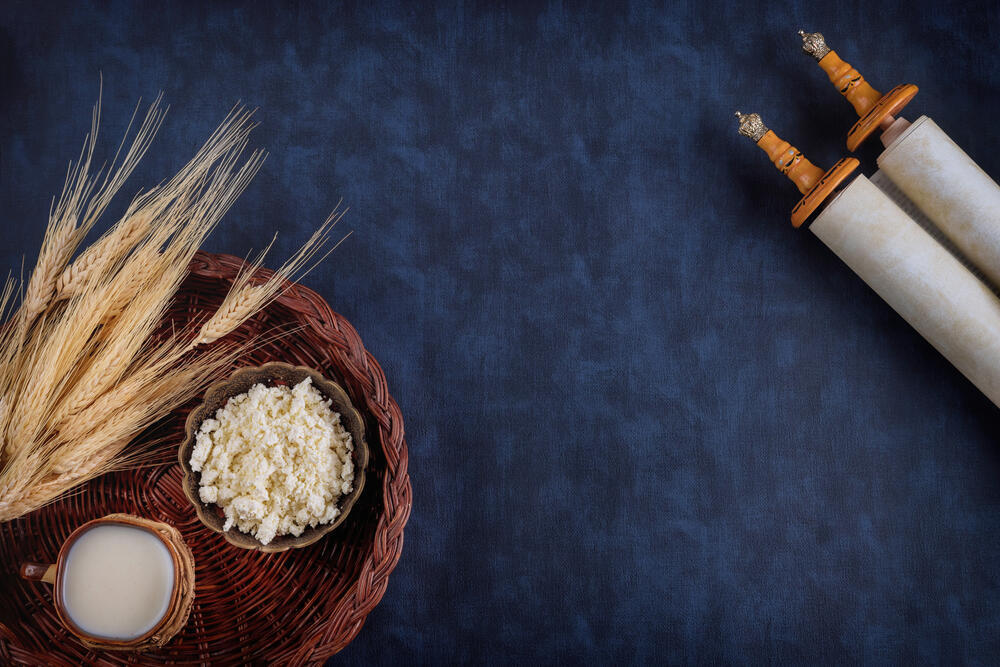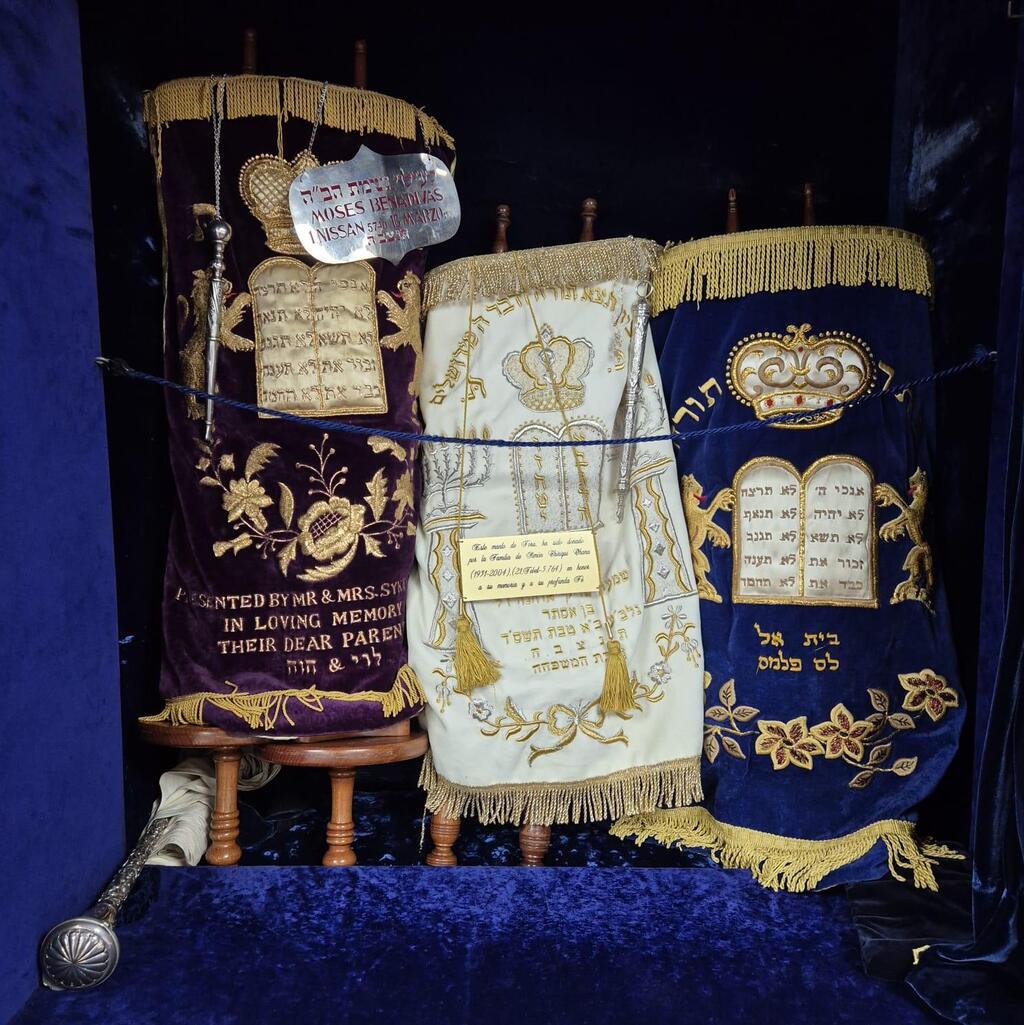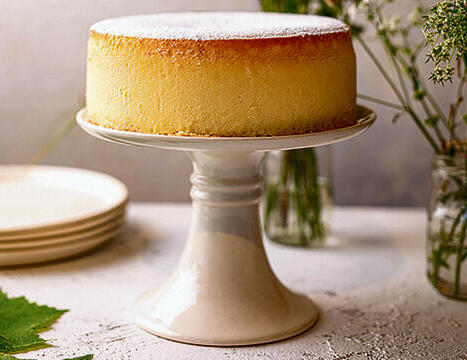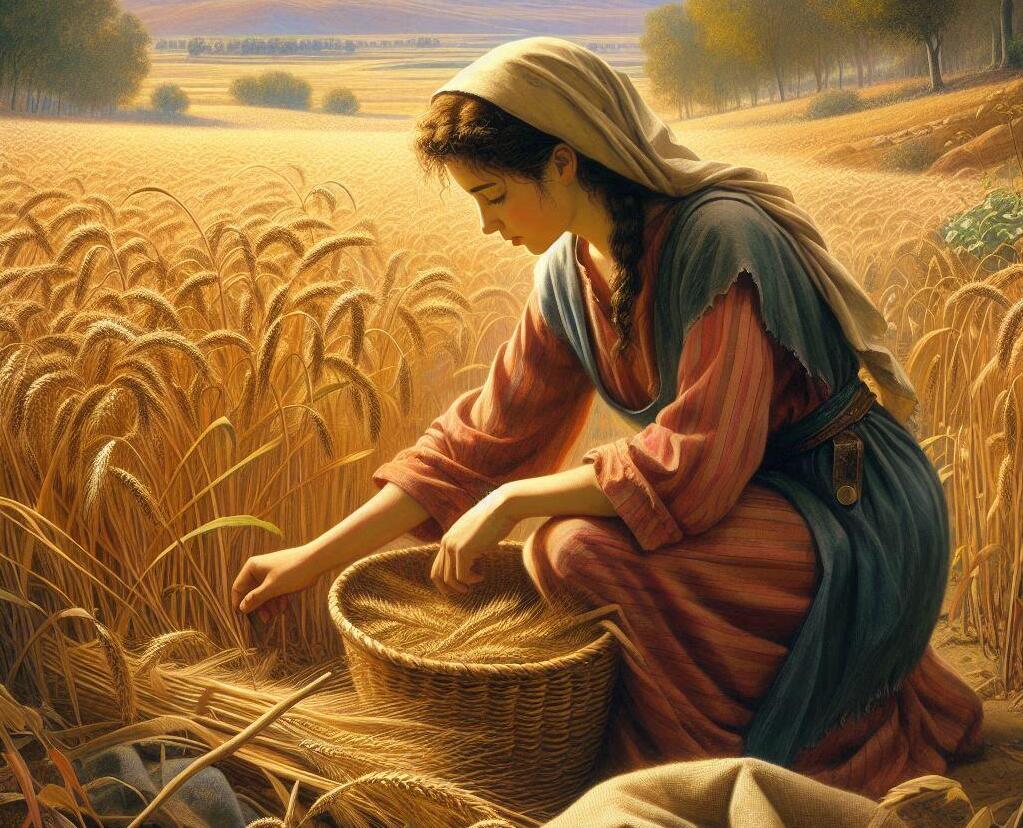At its heart, the holiday of Shavuot - which starts this year at sundown on June 1- is a celebration of the “brit” (covenant) that exists between the Jewish people and God, forged at Mount Sinai.
At Mount Sinai, the Jews were transformed into a unique and chosen people. Unlike earlier covenants in the Torah – such as those God made with Noah and the Patriarchs - this was a covenant made with the entire Jewish nation rather than with individuals. That is why the revelation at Sinai is such a central event in Jewish history and why Shavuot holds a significant place on the Jewish calendar.
Early on in the third month of the year (based on the Biblical calendar), the Jews encamped adjacent to Mount Sinai. In a very known and often cited teaching of the sages, it is learned that at Mount Sinai the Jews behaved “as one people with one heart.”
4 View gallery


There are many themes and customs associated with the holiday of Shavuot
(Photo: ungvar / Shutterstock)
Why, of all the major events that the Jewish people experienced at that time, is it specifically this event that deserves this definition, placing national unity at the forefront?
The answer is that there is one fundamental condition that predicates the successful acceptance of the Torah - Jews must be a people with one heart. Only once there is a common understanding of the need for the Torah and the centrality of these texts for Jewish peoplehood, are Jews truly deserving of receiving the Torah.
In this sense, Shavuot is perhaps the ultimate holiday of Jewish unity. It is a recognition that God’s choice to give the Jewish people the Torah is entirely centered on its existence as a nation united in its identity.
The need for strong national, Jewish unity is a message that certainly resonates this year. Israel and the Jewish people are facing enemies and threats that are intent on creating and fostering division. Time and again the Jewish people have seen that success in overcoming enemies is only achieved when a united Jewish nation approaches them.
Customs of the holiday
There are several traditional Shavuot holiday customs, all of which relate to the giving of the Torah and the covenant that the Torah represents between the Jewish people and God.
Intensive and expanded Torah study:
There is a widespread custom to invest additional time and effort dedicated to Torah study on Shavuot.
While there are many who adopt a practice to stay up the entire night of Shavuot engaged in Torah study, the goal should be to ensure that people feel comfortable, inspired and connected to the materials they are learning.
Most important is that the study feels relevant and motivates them to feel a stronger connection to their identity as Jews, linking them back to the monumental events at Sinai.
The Tzohar Rabbinical Organization organizes hundreds of study sessions all over Israel to bring people together for these types of relevant and accessible connections to Jewish traditions and texts. Materials are provided to help guide the sessions with this year’s focus on how current challenges, manifested primarily by the ongoing war, also serve to create new and meaningful connections to Jewish peoplehood. Other groups also arrange pre-Shavuot and Shavuot night study sessions to honor the holiday tradition.
Dairy meals
In advance of Shavuot, consumers will see companies heavily marketing dairy products in response to the widely embraced custom to eat dairy foods over the holiday - whereas most other Jewish holidays are traditionally celebrated by eating meat.
The tradition is believed to date back over 700 years to Jewish communities in Germany and France, where Shavuot meals were prepared to be “flowing with milk and honey.” Over the centuries, the honey focus slowly receded but the dairy products prevailed. In time, the custom spread across borders and even made its way into the traditions of Sephardic homes across the Diaspora.
While there are various explanations given for the roots of this custom, one of the main ideas is that the Torah is compared in its essence to milk (and in particular mother’s milk) as the original source of spiritual nourishment in our lives. The whiteness of milk is highly symbolic in Jewish tradition of purity and as a reflection of the holiness and merits of the Torah itself.
Recitation of the Megillah of Ruth
On Shavuot, the custom is to read the story of Ruth which details the path of a woman from the distant land of Moab who joins her Jewish mother-in-law, Naomi, and makes her way to the Land of Israel and the Jewish people.
<< Get the Ynetnews app on your smartphone: Google Play: https://bit.ly/4eJ37pE | Apple App Store: https://bit.ly/3ZL7iNv >>
Many reasons are given for why we read this particular story on Shavuot. Practically the story took place during the wheat harvest, the time of year when Shavuot is celebrated. On a deeper level, Ruth’s decision to convert and her passionate connection to Judaism are a metaphor for acceptance of the Torah, which is of course the central theme of the holiday.
Ruth was also a direct ancestor of King David, showing how her personal choice created a legacy that produced one of the greatest and most important leaders in Jewish history.
Adorning homes and synagogues with flowers
Ahead of Shavuot, synagogues decorate the sanctuary with flowers and many homes embrace this custom as well.
This custom originates from the teachings of the sages that, even though Mount Sinai is located in the desert, at the time of the giving of the Torah, the mountain bloomed with flowers. In addition, Torah is associated directly with life and living - so flowers and vegetation are an appropriate symbol to celebrate the Torah.
Wishing you and your family a meaningful, happy and healthy holiday!
- Rabbi David Stav, Chair of the Tzohar Rabbinical Organization
First published: 22:48, 05.29.25




